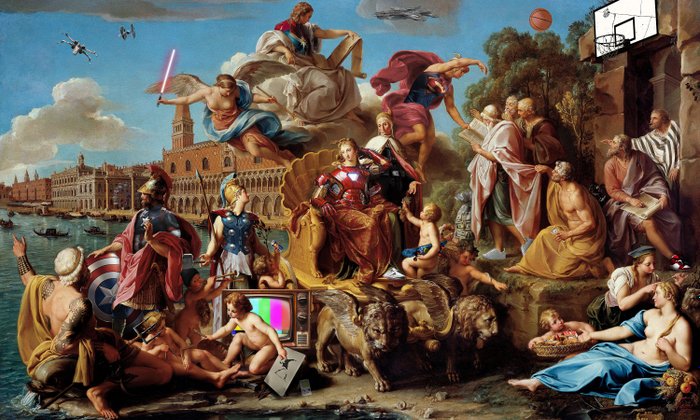“Fallen Angel,” a striking 19th-century painting by French artist Alexandre Cabanel, remains one of the most emotionally resonant works of art from the Romantic era. Created in 1847, this oil painting captures a pivotal moment in biblical mythology—the fall of Lucifer, the most beautiful and powerful angel cast out of Heaven after rebelling against God. Through the use of rich symbolism, dramatic composition, and impeccable technical skill, Cabanel evokes a range of emotions that continue to captivate viewers today.
A Glimpse into Cabanel’s Career
Alexandre Cabanel was one of the most successful academic painters of his time, known for his attention to detail, classical technique, and devotion to historical and mythological subjects. His mastery of the human form, along with his ability to infuse his subjects with profound emotional depth, allowed him to rise to prominence in the French art scene. Although he was known for his grand historical works, “Fallen Angel” stands out as one of his most personal and emotive pieces.
The Story Behind “Fallen Angel”
At the core of “Fallen Angel” is the biblical story of Lucifer, the angel who dared to defy God’s authority. After being cast down from Heaven, Lucifer becomes the embodiment of sin and rebellion. Cabanel’s interpretation of this moment focuses on the aftermath of this fall, portraying the angel in a state of deep contemplation and sorrow. The painting presents a young, beautiful male figure with a muscular physique, sitting alone on a rocky landscape. His wings are still intact, but his eyes reveal his inner torment—a mixture of defiance and vulnerability.
This depiction is far from the traditional representations of Satan as a terrifying or monstrous figure. Instead, Cabanel humanizes Lucifer, emphasizing the tragedy of his fall and the complexity of his emotions. The angel’s tear-filled eyes, clenched fists, and tense posture allude to both regret and unresolved anger, making it clear that this is a moment of inner conflict as much as it is a depiction of outward rebellion.
Symbolism and Emotional Depth
One of the most striking aspects of “Fallen Angel” is its use of symbolism to convey the weight of Lucifer’s fall. The contrast between the angel’s delicate, ethereal beauty and the harsh, barren landscape serves as a powerful metaphor for the loss of innocence and purity. His wings, still white and untainted, symbolize the lingering traces of his former glory, while the shadows cast around him hint at the growing darkness within his soul.
Cabanel also employs light and shadow to emphasize the emotional duality of the scene. The angel’s face is bathed in a soft light, highlighting his divine beauty, while his body and surroundings are enveloped in a darker, more ominous atmosphere. This juxtaposition mirrors the internal struggle between good and evil, as Lucifer grapples with the consequences of his rebellion.
The tear that lingers in his eye is another key symbolic element, suggesting that even in his defiance, there is a sense of loss and regret. This emotional complexity is a hallmark of Romantic art, which often sought to explore the darker, more tumultuous aspects of the human experience.
Legacy and Influence
Since its creation, “Fallen Angel” has continued to resonate with audiences, both for its aesthetic beauty and its psychological depth. The painting has been interpreted in various ways over the years, with some seeing it as a cautionary tale about pride and ambition, while others view it as a meditation on the inevitability of failure and the human condition.
Cabanel’s “Fallen Angel” also became a source of inspiration for later artists, particularly those interested in themes of rebellion, despair, and the supernatural. Its influence can be seen in both visual arts and literature, as the figure of the fallen angel continues to symbolize a range of emotions, from defiance and freedom to regret and isolation.
Conclusion
“Fallen Angel” remains one of Alexandre Cabanel’s most iconic works, not only for its technical brilliance but also for its ability to convey the complex emotions of its subject. Through careful attention to detail, use of symbolism, and a deep understanding of human psychology, Cabanel created a work of art that transcends its mythological subject matter, speaking to universal themes of loss, rebellion, and the search for redemption. Today, the painting continues to inspire and provoke reflection, a testament to its enduring power and relevance.

